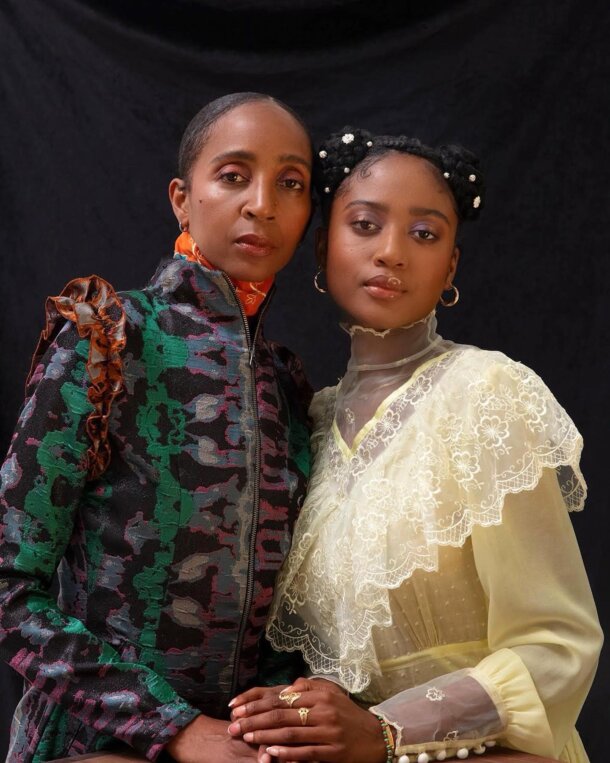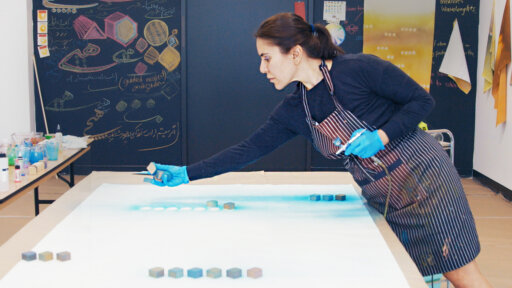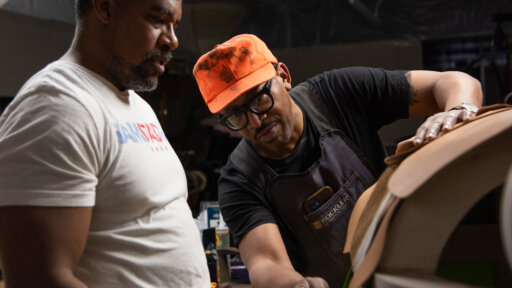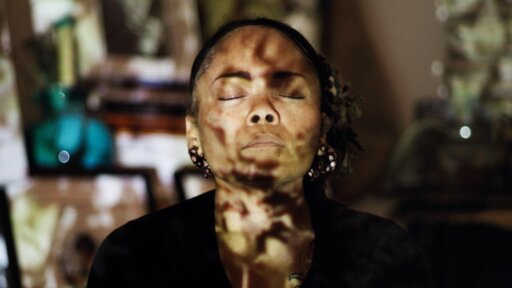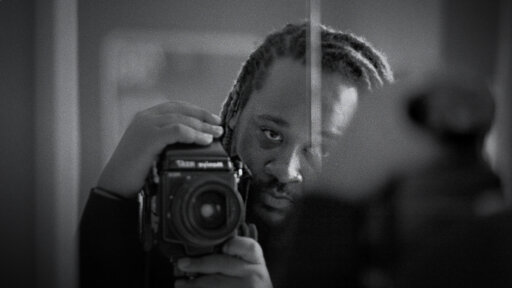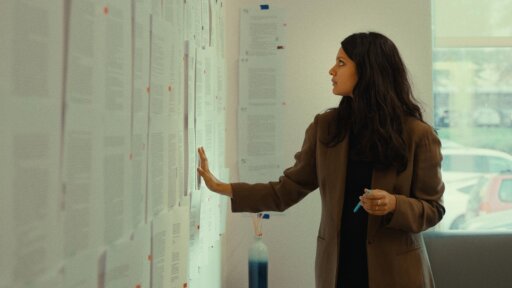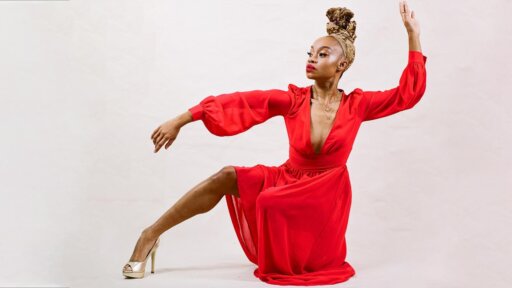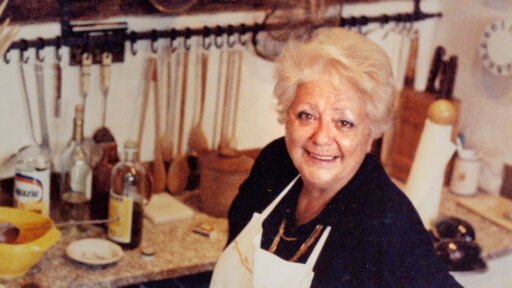House of Aama: Threads of Legacy is part of In The Making, a documentary shorts series from American Masters and Firelight Media follows emerging cultural icons on their journeys to becoming masters of their artistic disciplines.
Jamal Ademola’s director statement
“Healing comes when the individual remembers his or her identity—the purpose chosen in the world of ancestral wisdom—and reconnects with that world of Spirit.” – Malidoma Patrice Somé
These words from one of my favorite authors illuminate what I see in House of Aama, the mother-daughter team of Rebecca Henry and Akua Shabaka. Their website describes House of Aama as a “spiritual expression…in material form,” which I find an accurate description for the world-building they create with their garments.
Rooted in love and tradition, their clothing embodies a reverence for African spirituality, practices often misunderstood in the West. Their work draws on ancestral traditions of honoring and remembering, tapping into the spirits of waters like Oshun and Yemaya, as well as folklore figures like Anansi. I see in their garments the embodiment of West African Yoruba mythologies, stories of Black American and Caribbean migration, and the tactile preservation of familial histories.
Early in production, I read a Vogue article where Akua recounted the challenges of growing up with features that set her apart from girls whose hair more closely matched white beauty standards. This struggle, familiar to many Black women and men, felt especially moving as she described finding empowerment in embracing traditional African braiding styles suited to her natural Black hair. Akua’s journey reminded me of J.D. ‘Okhai Ojeikere’s legendary photographs of Nigerian women from the 1950s, portraits that capture ornate spirals and fractal hairstyles—stunningly elaborate coiffures with ancestral ties.
Inspired by a conversation with Akua, I wondered if we could document a dream image that represented House of Aama’s archival work, their ancestral reverence, and their fullest realization of themselves as Black women. With the support of my production company rep WTBR, we brought this vision to life for the film’s opening.
For Black Americans, understanding histories that extend beyond the slave trade is important. As an artist with a Nigerian father and Black American mother, investigating Black identity and building Pan-African bridges is at the core of my artistic work, so I was thrilled to document House of Aama as they traveled to Accra, Ghana—Akua’s paternal ancestral connection through the Caribbean.
Their recent collections have paid tribute to Akua’s father and Rebecca’s late former partner, Jamaiel Shabaka, a prolific Afro-Caribbean musician active in Los Angeles’s Free Jazz scene. In the film, I wanted to capture some of the difficulties they navigated after his death in 2021 and their process of creating “Sun Records”, their latest collection honoring his Free Jazz legacy.
As bell hooks reminds us, “Love is an action, never simply a feeling.” Fashion may be ephemeral, but in House of Aama’s work, their creative acts and cultural impact have the possibility to reverberate through time.
More about Rebecca L. Henry and Akua Shabaka and House of Aama
House of Aama is a boutique lifestyle clothing brand founded by mother-and-daughter duo Rebecca L. Henry and Akua Shabaka. The brand explores the folkways of the Black experience by designing timeless garments with nostalgic references, informed by historical research, archival analysis, and storytelling. Aama Studio expands the breadth of this work into various mediums of visual storytelling, including film and installation practices. Weaving together fashion, art, and history, they aim to evoke dialogue and social commentary around heritage, remembrance, and the illumination of nuanced histories.
Rebecca L. Henry is a 1993 graduate from the UCLA School of Law. She is from a family of Southerners from Louisiana on her mother’s side and South Carolina on her father’s side who have a rich history of ancestral remembrance and retention of folkways. As a creator and designer, Rebecca pulls on her family traditions to weave and craft the stories that inspire the fashion collections for House of Aama. As an attorney, she is the Director of legal and business affairs for the brand. She also oversees manufacturing and production.
Akua Shabaka is a 2019 graduate from Parsons the New School for Design with a BBA degree in Strategic Design & Business Management. Akua is a multidisciplinary artist born and raised in South Los Angeles with cultural roots in the Caribbean and Southern States. She is the creative director and project manager. Akua has garnered attention not only for her fashion label but for her keen eye in fashion, style and culture, as well as, spirituality, beauty & wellness. In her spare time, Akua enjoys traveling and learning about new cultures.
More about Jamal Ademola
Jamal Ademola is a Nigerian-American artist and filmmaker who works across film, animation, painting, installation, and performance. He tries to remember his dreams before they fade. Raised in Lagos, Nigeria, and uprooted to the U.S. at ten years old, he creates art and films that dwell in the in-between, exploring Black identity, love, migration, and the concept of being. He is the creative director of The Blind Couple From Mali, an upcoming documentary featuring Grammy-nominated musicians Amadou and Mariam. As an actor, he appeared in Ten Cent Daisy (2022) and Imagine a Moon Colony (2020). His work has been exhibited at the Wassaic Project (2025), August Wilson Center (2024), Images Festival (2024), Black Cultural Archives (2023), Alchemy Film & Arts (2023, 2022), and Kala Art Institute (2022). Supported by Comcast NBCUniversal, Firelight Media, PAM-CUT, BAVC Media, and other esteemed organizations, his work tells stories for those who feel bereft and suspended between places. He is currently directing a docu-fiction film titled They Came From The Clouds and a romantic visual auto-ethnographic film titled Pieces of You. He is represented by Where the Buffalo Roam.

